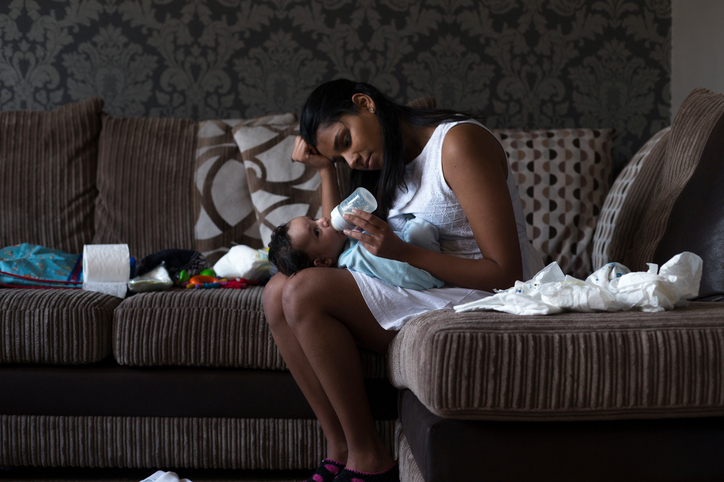The United States’ maternal mortality rate is abysmal, and women of color are particularly vulnerable.
![]() No amount of fame or fortune can run interference when it comes to mothers dying or at-risk during pregnancy, childbirth, or early motherhood. And that holds especially true for African American women.
No amount of fame or fortune can run interference when it comes to mothers dying or at-risk during pregnancy, childbirth, or early motherhood. And that holds especially true for African American women.
At 26.4 per 100,000 live births, the U.S. has the worst rate of maternal death in the developed world—by several times over. Even more disquieting, the U.S. rate rose by 136 percent between 1990 and 2013.
But the Centers for Disease Control and Prevention shows a significant disparity among races for maternal mortality, with a far higher figure for African American mothers—43.5 deaths per 100,000 live births, compared to 12.7 deaths among white mothers. According to a 2014 study from, among other organizations, the National Latina Institute for Reproductive Health, in some parts of Mississippi, where roughly 40 percent of its population is black, Hispanic, Latino, Asian, or American Indian, the rate of maternal death for women of color exceeds that of sub-Saharan Africa.
The World Health Organization defines maternal mortality as “the death of a woman while pregnant or within 42 days of termination of pregnancy, irrespective of the duration and site of the pregnancy” not from accidental or incidental causes. Worldwide, 99 percent of women who die during or after childbirth live in developing countries. Skilled care before, during, and after pregnancy are a proven deterrent.
In Connecticut, between 2011 and 2014, the official count for pregnancy-related deaths is 8. There are no more recent numbers, and that number is inaccurate. Maternal deaths have been woefully underreported, with scant attention paid to racial breakdowns. Connecticut was, however, included in a 2017 study that looked at 27 states and the District of Columbia. The report said that between 2013-2014, there were just over 56 maternal deaths for every 100,000 births among African American mothers, compared to just over 20 for white mothers.

iStock Photo.
In CT, the official count of pregnancy related deaths is 8 from 2011-2014. There are no more recent numbers.
Maternal deaths are tied to multiple factors, including poverty, access to health care, the health of the mother prior to pregnancy, as well as less easily-identified reasons. A recent California survey said doctors tend not to listen to African American women as carefully as they do white women. When her daughter Alexis Olympia was born last September by emergency C-section, tennis great Serena Williams had to ask twice for a CT scan. (A nurse thought the tennis great was loopy from pain medicine.) When her medical team finally listened to Williams’ suggestion, the scan revealed blood clots in her lungs. Later, her C-section burst open, and the complications nearly grounded her.
The crisis has been building, but only recently have elected officials started to take notice. Earlier this month, a bipartisan group of U.S. Senators asked the White House to commit to reducing maternal mortality. The group includes 14 senators, including Lisa Murkowski (R-Alaska); Cory Booker (D-New Jersey); and both senators from Florida, Bill Nelson, a Democrat, and Marco Rubio, a Republican. The senators asked for more data, particularly around women living in poverty who receive government aid.
Also earlier this month, after a USA Today investigation into the phenomenon, the powerful House Ways and Means Committee sent letters 15 hospitals chains, asking them for information about the deaths of new mothers in their care, as well as how they identify at-risk women, the number of deliveries they performed in 2017, and information about pregnancy-related deaths of women in their care. The hospital chains operate 900 hospitals around the country.
Add to that some private initiatives, including a grant program from Merck & Co., a pharmaceutical company that announced plans to give $500 million to city-based organizations that work to reduce maternal mortality.
Last session, Connecticut legislators passed a bill that establishes a maternal mortality review program as part of the state Department of Public Health. An earlier version of the program was defunded.
Unfortunately, this program isn’t state-funded, either. In the face of this health crisis, an unfunded program feels like lip service. The next session starts in January. Let’s see if Connecticut’s legislators can take another, serious look at this. Research takes funding. Collecting data does, as well.
Susan Campbell is a distinguished lecturer at the University of New Haven. She can be reached at slcampbell417@gmail.com.